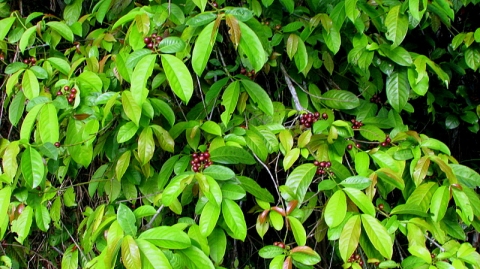The increasing prevalence of multidrug-resistant bacteria (MDR) poses a significant global health threat, rendering many conventional antibiotics ineffective. This issue extends to common skin infections, where bacteria like Staphylococcus aureus and Staphylococcus epidermidis exhibit growing resistance. Furthermore, cosmetic products, while generally considered low-risk, can be susceptible to microbial contamination during production and use, posing a danger to consumers. The cosmetic industry is actively seeking effective antimicrobial agents of natural origin with low toxicity and production costs to enhance product safety and durability. Simultaneously, there is a growing interest in plant-based ingredients in cosmetics due to their potential bioactive molecules and consumer preference for natural alternatives to synthetic substances like parabens and phthalates, which have been linked to adverse health effects. Essential oils, known for their fragrant properties, also possess a range of biological activities, including antimicrobial effects, making them promising candidates for cosmetic applications. This study investigates the potential of the essential oil extracted from the fresh leaves of Siparuna guianensis A. DC. (‘negramina’), a plant used in folk medicine for various ailments and known for its strong aroma7 , as an antimicrobial adjuvant in topical formulations to combat drug-resistant bacteria and enhance the properties of cosmetic products.
Methods
The essential oil was extracted from Siparuna guianensis leaves using steam distillation and its chemical composition was analyzed by GC/MS. The antimicrobial activity of the essential oil, alone and in combination with ampicillin and gentamicin, was determined against several Staphylococcus strains using the broth microdilution method to find the Minimal Inhibitory Concentration (MIC) and the checkerboard assay to assess synergy (FICI). Ointments containing the essential oil and gentamicin, alone and in combination, were prepared and their activity against S. aureus and MDR S. epidermidis was evaluated using an agar overlay assay. The antioxidant activity of the essential oil was assessed using DPPH and ABTS radical scavenging assays.
Key Findings
•The major constituents of the S. guianensis essential oil were identified as sesquiterpene hydrocarbons, including bicyclogermacrene (32.52%) and germacrene D (21.60%). The chemical composition of this oil differed from previous studies on the same species from other regions of Brazil.
•The essential oil alone showed antimicrobial activity only against S. epidermidis strain A (XDR) with a MIC of 500 µg.mL−1.
•The combination of the essential oil with ampicillin demonstrated a synergistic effect against clinically resistant S. aureus (FICI = 0.256) and XDR S. epidermidis (strain A, FICI = 0.375), and an additive effect against MDR S. epidermidis (strain B, FICI = 0.503) and S. pseudointermedius (FICI = 0.503).
•The combination of the essential oil with gentamicin resulted in synergism against MDR S. epidermidis (strain B, FICI = 0.5) and an additive effect against XDR S. epidermidis (strain A, FICI = 0.506).
•Ointments containing a combination of the essential oil and gentamicin showed enhanced antimicrobial activity against both S. aureus and MDR S. epidermidis compared to ointments containing only gentamicin at lower concentrations. Notably, the combination could restore gentamicin’s efficacy against the multidrug-resistant S. epidermidis strain.
•The essential oil did not exhibit significant antioxidant activity in either the DPPH or ABTS assays, likely due to the high concentration of hydrocarbon terpenes which are not effective hydrogen donors in these assays.
This research highlights the novel potential of Siparuna guianensis essential oil as an antimicrobial adjuvant in topical formulations. The study’s key novelty lies in demonstrating the synergistic and additive effects of this essential oil when combined with conventional antibiotics like ampicillin and gentamicin against clinically relevant multidrug-resistant Staphylococcus strains, including the restoration of antibiotic efficacy at lower concentrations. This finding suggests a promising strategy to combat the growing challenge of antibiotic resistance in skin infections and to develop more effective dermocosmetic products. The formulation of ointments with the essential oil and gentamicin further supports its potential for topical applications, offering enhanced antimicrobial activity and a pleasant herbal scent. Future research should focus on in vivo efficacy, transdermal action, and toxicity assessments to further validate the use of S. guianensis essential oil in novel therapeutic and dermocosmetic formulations.
Link to the study: https://www.mdpi.com/2079-9284/12/2/81

